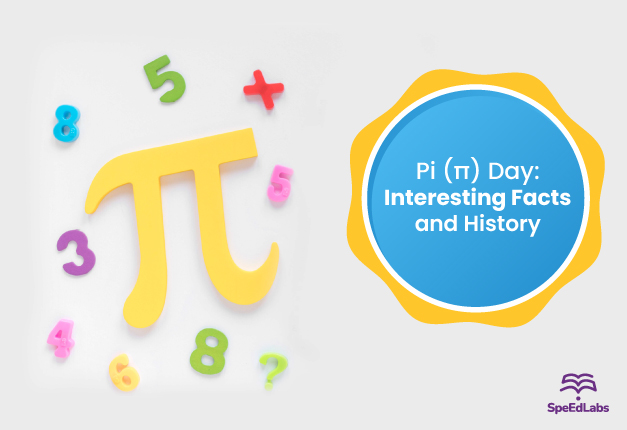If you have ever tried finding the circumference of a circle or the area of a circle you might have used pi π in the formula. But, did you know that there is pi π day which is celebrated with great enthusiasm? Every year on March 14, the world celebrates Pi Day (π) to honour the mathematical constant. Pi Day is observed on March 14 in honour of its approximate value – 3.14, which is written in the month/day format (3/14). Pi Day is celebrated with a variety of mathematical quizzes and competitions that help students excel in their exams. Let’s look at Pi Day’s history, facts, and why it’s celebrated.
History
Larry Shaw, an American physicist, organised the first Pi Day in 1988 at the San Francisco Exploratorium. The US House of Representatives passed a non-binding resolution in 2009 designating March 14 as National Pi Day. In its 40th General Conference in November 2019, the United Nations Educational, Scientific, and Cultural Organization (UNESCO) decided to declare Pi Day (March 14) as the International Day of Mathematics.
Pi Day Celebration
The first π Day celebration consisted of Shaw and his wife handing out slices of fruit pie and tea at 1:59 p.m., which is the three digits after 3.14, but the holiday quickly gained popularity throughout the Bay Area.
Popular ways to celebrate include baking a pie and other circular confectionery treats, making a paper pi chain with a different colour for every 10 digits, and making a collage out of circular shapes.
Significance of Pi
Pi is the circumference to diameter ratio of a circle.
For millennia, mathematicians have enjoyed calculating the record digits of pi. These calculations were done by hand until the 1900s and reached records in the 500s.
With the advent of computers, that number grew into the thousands, millions, and now trillions. Emma Haruka Iwao, a Google developer, broke the record held by scientist and pi enthusiast Peter Trueb in 2019 by calculating Pi to 31 trillion digits – 31,415,926,535,897 digits to be exact.
Suresh Kumar Sharma of India set the current world record for memorising and reciting the most digits of pi in 2015 when he recited a mind-boggling 70,030 digits in 17 hours and 14 minutes.
Interesting facts about Pi
- Archimedes of Syracuse was the first to calculate Pi.
- The number Pi is an irrational number. If the number value is calculated, it can go on indefinitely.
- We will never know the exact circumference of a circle, just as we will never know the exact value of Pi π.
- Pi Day also falls on the birthday of scientist Albert Einstein. Stephen Hawking, a well-known theoretical physicist, died on this date in 2018.
- Isaac Newton, the father of calculus and a mathematician, calculated the value of Pi to at least 16 decimal places.
- Pi is the basis of an entire language. Michael Keith, a software engineer, published a book called ‘Not a Wake’ in Pi language in 2010.
- Pi Day is most commonly observed on March 14, but related celebrations have occurred on other dates.
- Pi π Approximation Day is observed on July 22 (22/7 in the day/month format), since the fraction 22⁄7 is a common approximation of π, which is accurate to two decimal places and dates from Archimedes.
- On June 28 (6/28 in the month/day format), two Pi Day, also known as Tau Day for the mathematical constant Tau, which is approximated as 6.28, is observed.
- Pi Approximation Day is also observed on November 10th because it is the 314th day of the year.
- The number 1 is the most common in the first 100,000 decimal places of pi, occurring over 10,000 times!
- Pi can be used to measure circular natural events ranging from water ripples emanating from a single point to calculating the spherical volume of the entire universe (using only the first 39 digits of pi!)
- The π symbol we use in math to represent pi was invented in 1737 by the Swiss mathematician, physicist, and astronomer Leonard Euler.
- The value was known as Archimedes’ constant before Euler popularised using the Greek symbol π to represent the ratio of a circle’s circumference to its diameter.
Now, after knowing all the related facts about Pi day and its history, do celebrate it on 14th March with great energy and enthusiasm
Also published on Medium.
